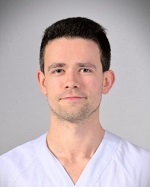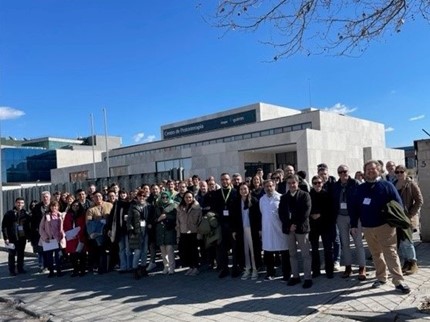Course Report
ESTRO Particle Therapy Course
26 February-2 March, 2023, Madrid, Spain
Could you please briefly introduce yourself?
Hello there! My name is Johan Martin Søbstad. I work as a medical physicist at Haukeland University Hospital in Bergen, Norway. To date, I have accumulated about five years of clinical experience, mostly with photon therapy.
Why did you choose to attend this course?
Norway is currently building two new proton therapy sites, one in the capital and one in Bergen. As we approach the planned start-up in early 2025, we are obtaining the experience and knowledge that we believe is required to run these sites. This course seemed attractive for us physicists, as we are somewhat unfamiliar with the ways of heavy particles.
What aspects of the course were the most interesting and why?
As a physicist I must declare my obvious bias; I found most of the ‘physics topics’ very interesting. Of course, the other topics such as clinical trials, diagnosis and location-specific talks were great as well. However, what I found most interesting were the snippets of highly valuable insight, wisdom and advice that were scattered throughout and in-between lectures. These will surely be remembered.
Did the course activities improve your knowledge and skills in the relevant subject?
Undoubtedly, yes.
Did the course meet your expectations? If so, how?
The course exceeded my expectations in terms of the quality of the lectures and the lecturers. Well done. There was a lot more discussion of carbon-ion therapy than I had anticipated, but I agree with the organisers that discussion of the strong and weak points of all the modalities (photon, proton and ion) was useful, regardless.
List three important ‘takeaways’ following the course.
Only three? In that case:
- be wary of higher-than-average linear energy transfer, but be even warier of sacrificing physical dose coverage;
- make sure your particle plans are robust, but not so robust that they remove the advantages of using particles; and
- the ‘cost’ of particle therapy is not as high as you might think.
How will what you have learned be implemented in your daily job/ clinical practice?
For now, the most useful things I have learned will be presented to the rest of the department and to my colleagues who will be working with particle therapy. Eventually, the knowledge might help to shape our future procedures, routines and treatment.
How would you encourage someone who has never been to an ESTRO course to join this course next year/ in two years?
More particle therapy centres are being built all over the world and new colleagues need to learn about them. Although the necessary expertise might be acquired locally within a country, the receipt of fresh, external views from a couple of highly experienced and resourceful individuals should – in my view – be part of your curriculum.

Johan Martin Søbstad
Medical physicist
Haukeland University Hospital
Bergen, Norway
Johan.Martin.Sobstad@helse-bergen.no

Visit of the Quironsalud Particle facility